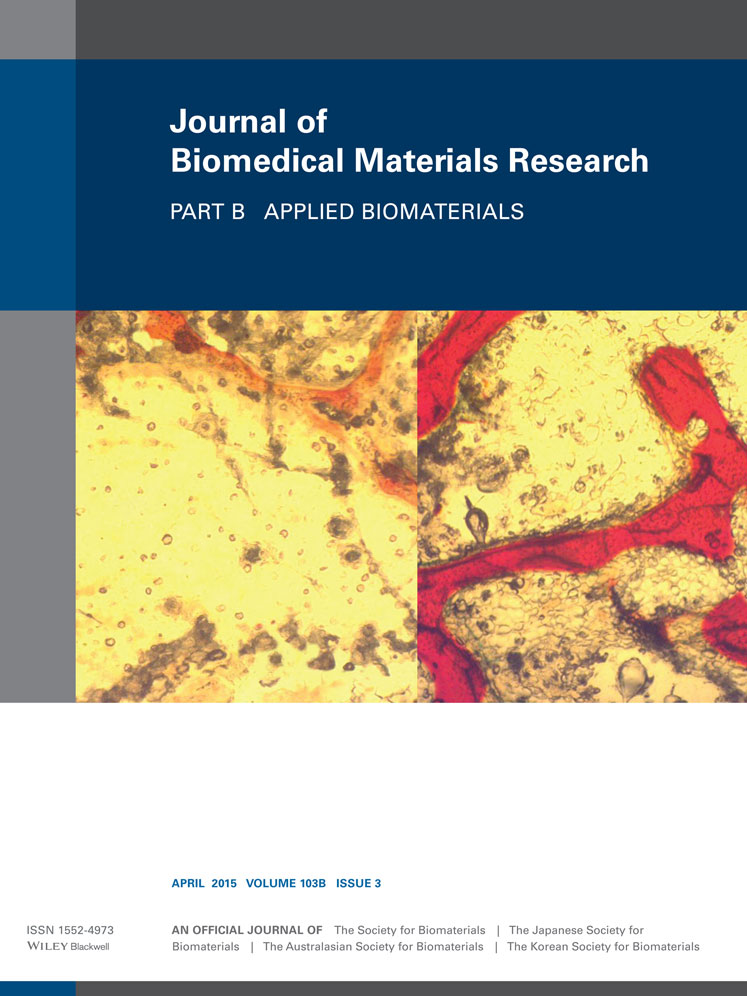Antifouling coating with controllable and sustained silver release for long-term inhibition of infection and encrustation in urinary catheters
Abstract
Urinary tract infections constitute a large proportion of nosocomial infections, and the urinary catheter is the most important predisposing factor. Encrustation induced by urease-producing uropathogens like Proteus mirabilis causes further complications. In the present work, a strategy for controllable and sustained release of silver over several weeks has been developed for combating bacterial infection and encrustation in urinary devices. Silver nanoparticles (AgNPs) were first immobilized on polydopamine (PDA) pre-treated silicone catheter surface and this was followed by another PDA coating. The number of AgNP-PDA bilayers could be manipulated to control the amount of silver loaded and its subsequent release. Poly(sulfobetaine methacrylate-co-acrylamide) was then grafted to provide an antifouling outer layer, and to ensure free diffusion of Ag from the surface. The micron-scale combination of an antifouling coating with AgNP-PDA bilayers reduced colonization of the urinary catheter by uropathogens by approximately two orders of magnitude. With one and two AgNP-PDA bilayers, the coated catheter could resist encrustation for 12 and 45 days, respectively, compared with approximately 6 days with the Dover™ silver-coated catheter. Such anti-infective and anti-encrustation catheters can potentially have a large impact on reducing patient morbidity and healthcare expenditure. © 2014 Wiley Periodicals, Inc. J Biomed Mater Res Part B: Appl Biomater, 103B: 519–528, 2015.




